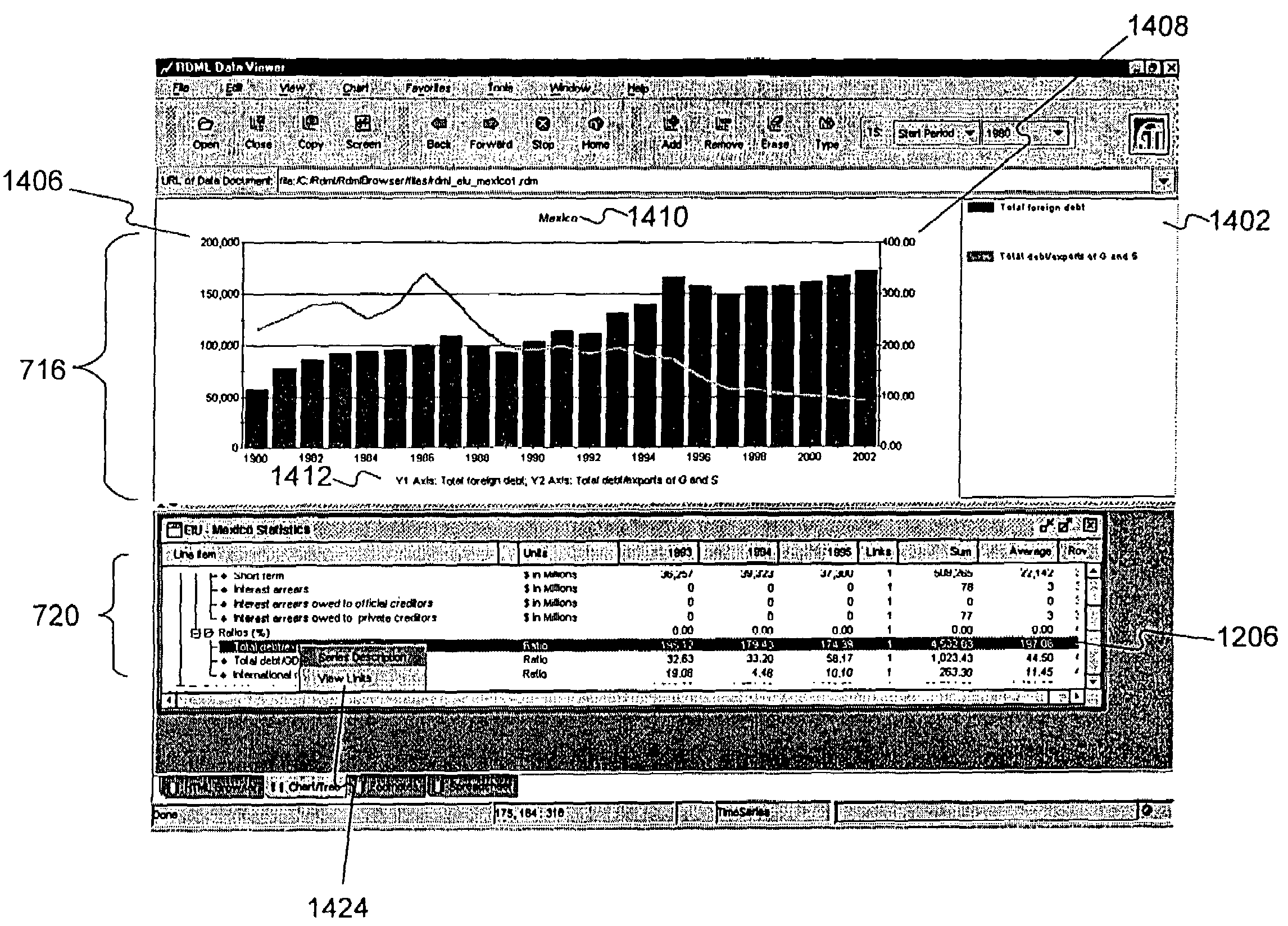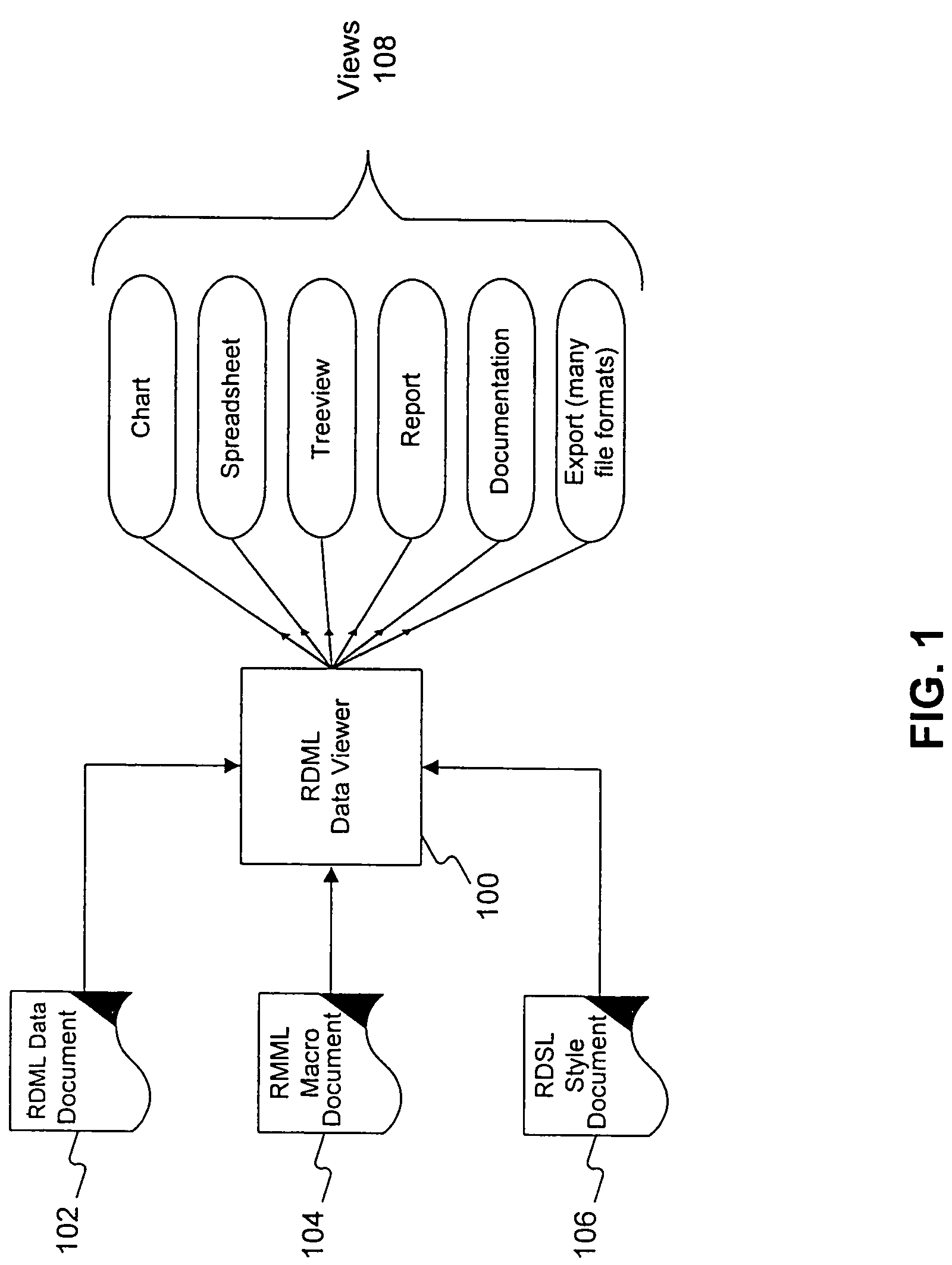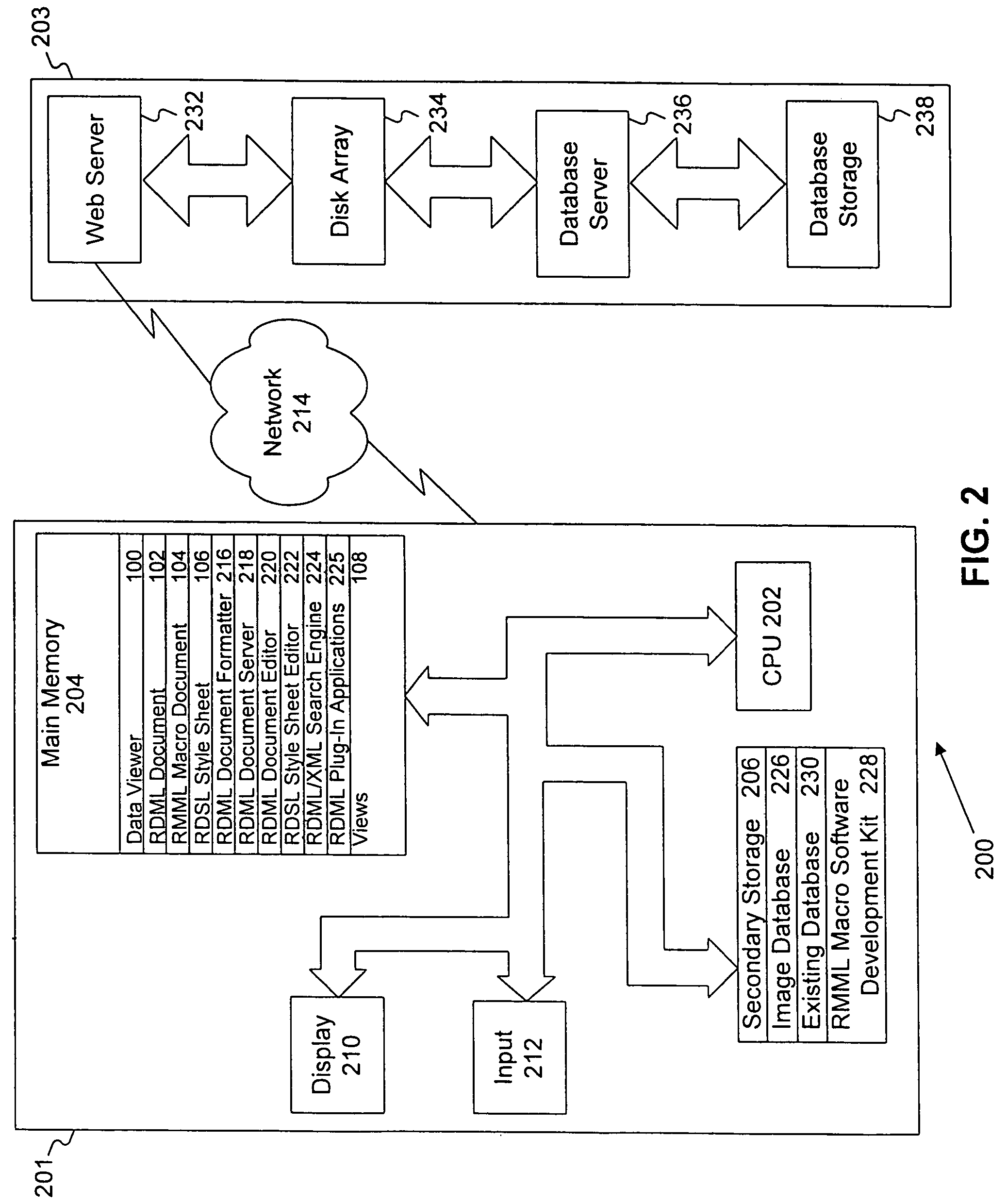Chart view for reusable data markup language
a data markup and data technology, applied in the field of data processing systems, can solve the problems of data not being both, data manipulation often increasing expense and difficulty, and individual markup languages are not compatible with each other, and achieve the effects of low cost, rapid writing, and widespread access on demand
- Summary
- Abstract
- Description
- Claims
- Application Information
AI Technical Summary
Benefits of technology
Problems solved by technology
Method used
Image
Examples
Embodiment Construction
[0068]Because of the length of the detailed description, the following table of contents is provided.
[0069]
TopicSectionReusable Data Markup Language OverviewIReusable Macro Markup Language OverviewI.ASystem Hardware ComponentsIISystem OverviewIIISystem DetailsIVInternal Data Viewer ArchitectureIV.ADocument Type DefinitionIV.A.1Reader, Parser and ProcessorIV.A.2X-value Transformer and Line Item Set TypesIV.A.3Primary Data StoreIV.A.4Chart ViewIV.A.5Tree ViewIV.A.6Spreadsheet ViewIV.A.7Footnote ViewIV.A.8Tagging WizardIV.A.9Aspects of RDML DocumentsIV.A.10Graphical User Interface and HTML browserIV.BReusable Macro Markup LanguageIV.CRMML Macro PackageIV.C1
I. RDML Overview
[0070]Methods and systems consistent with the present invention provide a markup language, referred to as Reusable Data Markup Language (“RDML”), and a data viewer referred to as the RDML data viewer that is used to retrieve, manipulate and view documents in the RDML format. Generally, RDML permits the browsing and ma...
PUM
 Login to View More
Login to View More Abstract
Description
Claims
Application Information
 Login to View More
Login to View More - R&D
- Intellectual Property
- Life Sciences
- Materials
- Tech Scout
- Unparalleled Data Quality
- Higher Quality Content
- 60% Fewer Hallucinations
Browse by: Latest US Patents, China's latest patents, Technical Efficacy Thesaurus, Application Domain, Technology Topic, Popular Technical Reports.
© 2025 PatSnap. All rights reserved.Legal|Privacy policy|Modern Slavery Act Transparency Statement|Sitemap|About US| Contact US: help@patsnap.com



